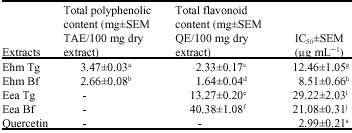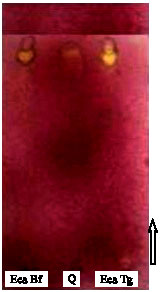Research Article
Antioxidant Activity of Aqueous Methanol and Ethyl Acetate Extract of Leaves of Annona senegalensis Pers from Togo Versus the One Originates from Burkina Faso
Faculte Mixte de Medecine et de Pharmacie, Universite de Lome B.P. 1515, Lome, Togo
I.P. Guissou
Departement de Medecine et Pharmacopee Traditionnelle, Institut de Recherche en Science de la Sante (IRSS/CNRST), Ouagadougou (Burkina Faso)
M. Lompo
Departement de Medecine et Pharmacopee Traditionnelle, Institut de Recherche en Science de la Sante (IRSS/CNRST), Ouagadougou (Burkina Faso)
E. Sakie
Faculte Mixte de Medecine et de Pharmacie, Universite de Lome B.P. 1515, Lome, Togo
B. Yaro
Departement de Medecine et Pharmacopee Traditionnelle, Institut de Recherche en Science de la Sante (IRSS/CNRST), Ouagadougou (Burkina Faso)










